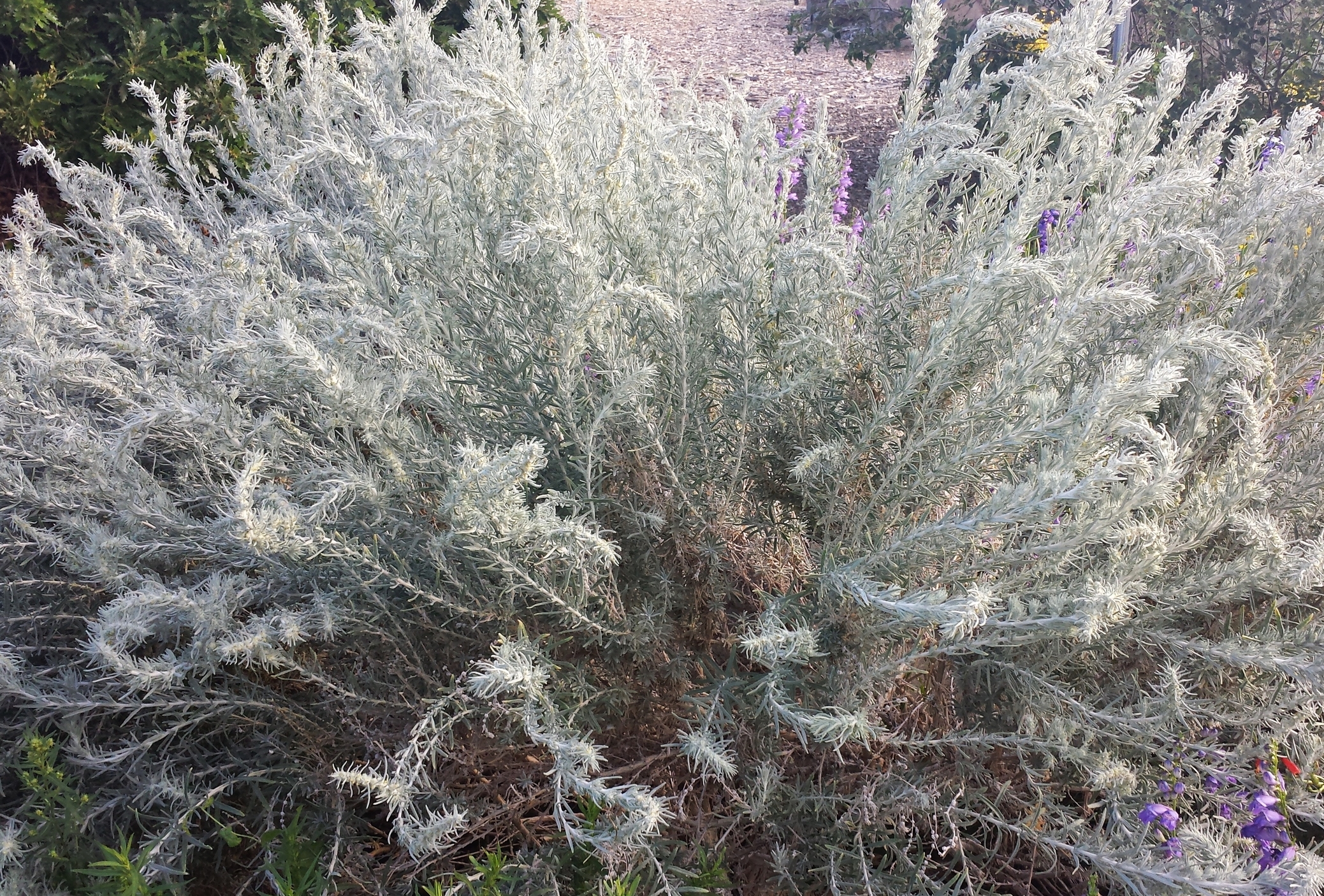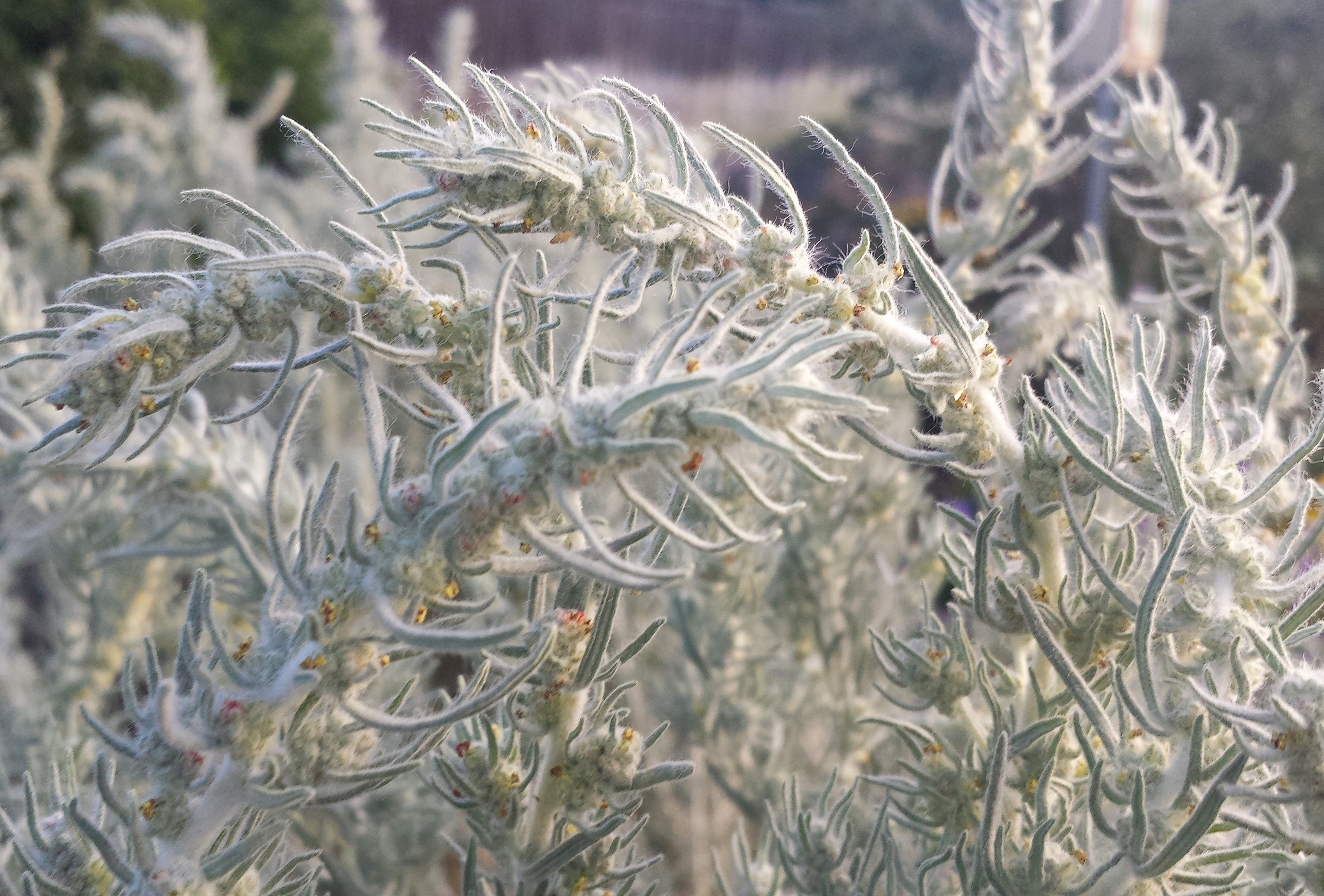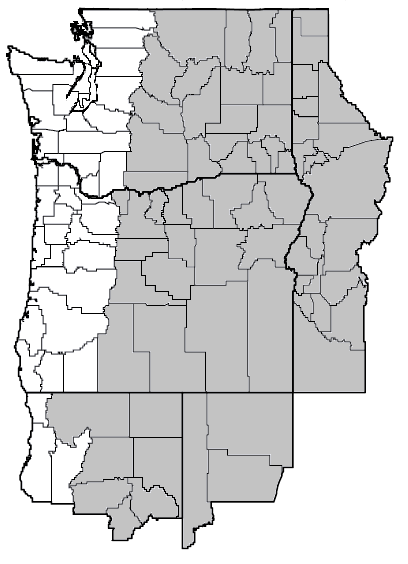Krascheninnikovia lanata (Winterfat)
Formerly Ceratoides lanata. Long-lived spreading evergreen subshrub up to 2 ft. tall with silvery white foliage and inconspicuous petal-less flowers, blooming April to August. Adapted to a wide range of soil textures, tolerating moderate to highly saline conditions; intolerant of acidic soils, flooding and prolonged wet conditions. Often forms pure stands within arid salt desert shrub, pinyon-juniper, sagebrush and at the edges of some woodland communities; 1,000 to 9,000 ft. elevation. Some tolerance to wildfire, able to sprout after low-severity burns. Germinates easily. Excellent pioneer in mine reclamation and revegetation after disturbance. Extremely palatable to all classes of livestock and wildlife. Important forage for Rocky Mountain bighorn sheep. Also browsed by deer, elk, pronghorn and numerous small mammals; a core food for black-tailed jackrabbits.
DISTRIBUTION / ADAPTATION
INFORMATION & ATTRIBUTES
Family: Chenopodiaceae
Duration: Perennial
Growth Habit: Shrub/subshrub
Native Status: Native
Growth Form: Multiple stem
Mature Height: 2 ft.
Bloom Color: Yellow
Fruit/Seed Color: White
Bloom Period: Spring
Annual Precipitation: 6-20 in.
Drought Tolerance: High
Shade Tolerance: Intolerant
Elevation:
Fire Resistance: No
Fire Tolerance: Medium
Nitrogen Fixation:
SOIL ADAPTATION
Coarse Texture: Medium
Medium Texture: Medium
Fine Texture: Medium
Salinity Tolerance: High
CaCO3 Tolerance: High
pH Range: 6.6-8.5
SEEDING NOTES
Seeds per Pound: 110,700
Seeding Rate: PLS lbs/acre
Season: Fall
Days to Germination:
VARIETIES & LOCAL ACCESSIONS
None




